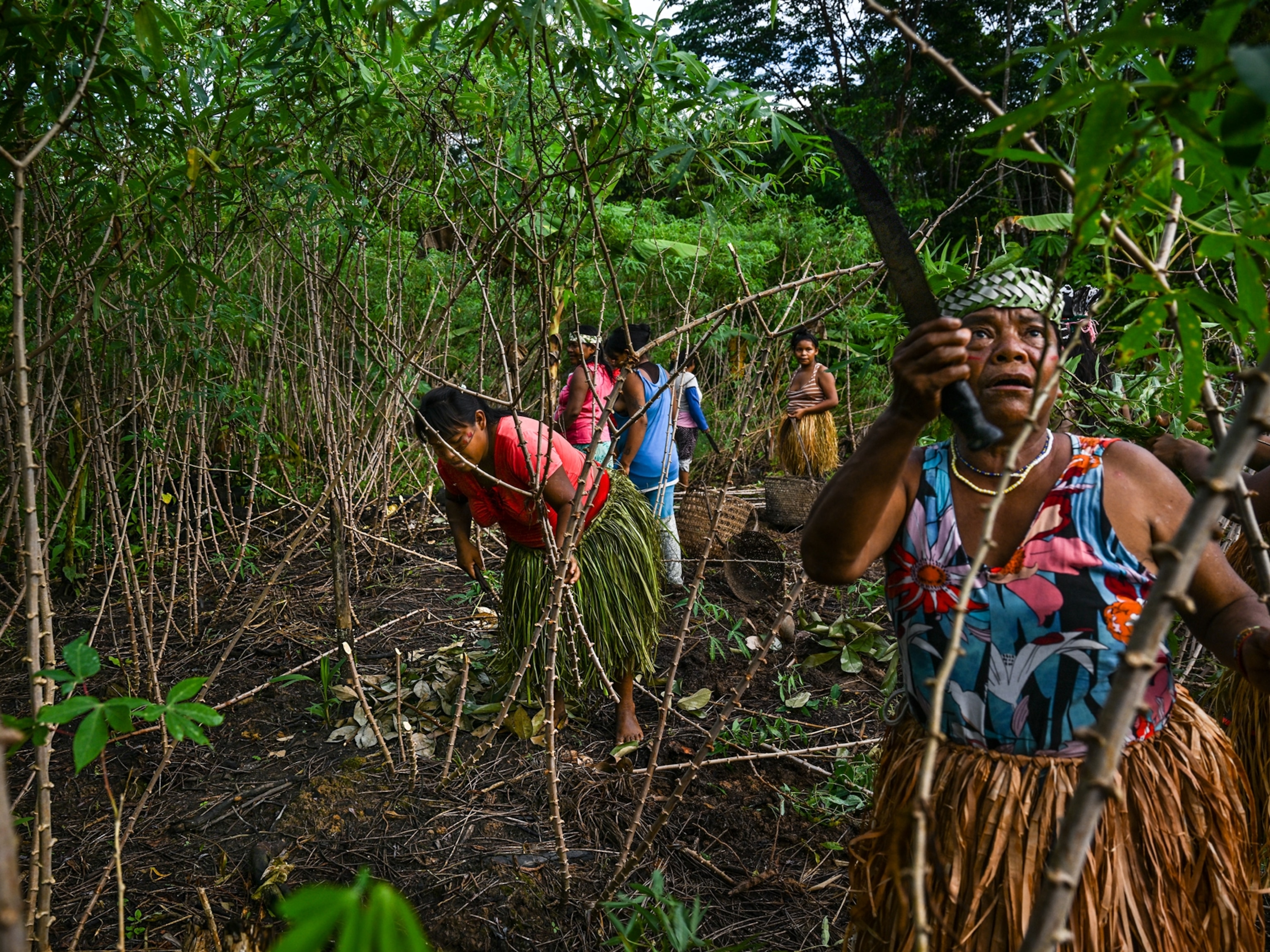New Amazon Species Discovered Every Other Day
Scientists are concerned some may go extinct before they can be studied.
The Brazilian Amazon is so full of life that, on average, explorers are finding a new species of plant or animal every other day.
That's the conclusion of a two-year review of newfound species conducted by the World Wildlife Fund (WWF) and an environmental group based in Mamirauá, Brazil. These organizations tracked the number of new vertebrate and plant species reported from the Amazon in 2014 and 2015. They used only peer-reviewed journals, which means that any new species claims had to be supported by other researchers.
In total, the team collected credible reports of 381 newly described species, including 216 plants, 93 fish, 32 amphibians, 20 mammals, 19 reptiles, and one bird.
Finding this many new species in the Amazon isn't altogether surprising. The region is massive, spanning more than four million square miles, and it already houses 10 percent of the world's known plant and animal species in a diverse set of ecosystems.
What did amaze the experts involved was the number of large mammals and reptiles that had managed to evade detection for so long, says Pedro Nassar, a biologist at the Mamirauá Institute for Susteinable Development.
The most surprising finds included a new monkey nicknamed the fire-tailed zogue zogue that was found in 2015 and a new river dolphin announced in 2014.
Already in Danger
The report notes, however, that accelerated rates of habitat destruction in the region could push many of these species to extinction before scientists have the chance to study them. The International Union for the Conservation of Nature has already labeled several of the newly identified plants and animals as threatened or endangered.
Species discovered in the southern and eastern portions of the Amazon may be most at risk, says Nassar, because that's where development is growing most rapidly. And while many regions of the Amazon are federally protected reserves, they may not stay that way for long.
On August 24, the Brazilian government approved a controversial plan that dissolved a protected region the size of Switzerland to allow gold and mineral mining. In a statement, WWF-Brazil's executive director, Mauricio Voivodic, described the move as a gold rush and stated it would have irreversible effects on both wildlife population status and conflict with indigenous people.
Earlier this summer, Laura Marsh, the director of the Global Conservation Institute, spotted a rare monkey in the Amazon that hadn't been seen alive for 80 years. In an interview with National Geographic, she noted at the time that her initial excitement was quickly replaced by concern that she had been able to find the monkey so quickly—a feat she partially contributed to the region's loss of habitat.
Nassar is unsure whether development is accelerating the rate of new species discoveries. But he does worry that encroaching human activity poses the greatest risk to species in the Amazon's unprotected regions.
"For me, this [study] shows we have a very rich Amazon," Nassar says. "We have to preserve [these species]."
The Mamirauá group plans to continue looking for new plants and animals, particularly along the region's rivers. Some parts of the far north and western Amazon have never been scientifically explored, and Nassar suspects this is where they'll find the world's next new species.
Correction: A previous version of this article incorrectly stated Pedro Nassar's name.
Related Topics
You May Also Like
Go Further
Animals
- Behind the scenes at America’s biggest birding festivalBehind the scenes at America’s biggest birding festival
- How scientists are piecing together a sperm whale ‘alphabet’How scientists are piecing together a sperm whale ‘alphabet’
- Orangutan seen using plants to heal wound for first timeOrangutan seen using plants to heal wound for first time
- What La Palma's 'lava tubes' tell us about life on other planetsWhat La Palma's 'lava tubes' tell us about life on other planets
Environment
- The northernmost flower living at the top of the worldThe northernmost flower living at the top of the world
- This beautiful floating flower is wreaking havoc on NigeriaThis beautiful floating flower is wreaking havoc on Nigeria
- What the Aral Sea might teach us about life after disasterWhat the Aral Sea might teach us about life after disaster
- What La Palma's 'lava tubes' tell us about life on other planetsWhat La Palma's 'lava tubes' tell us about life on other planets
- How fungi form ‘fairy rings’ and inspire superstitionsHow fungi form ‘fairy rings’ and inspire superstitions
History & Culture
- This thriving society vanished into thin air. What happened?This thriving society vanished into thin air. What happened?
- These were the real rules of courtship in the ‘Bridgerton’ eraThese were the real rules of courtship in the ‘Bridgerton’ era
Science
- Is the 5-second rule true? Science finally has an answer.
- Science
- Gory Details
Is the 5-second rule true? Science finally has an answer. - E-bikes are good for the environment—but what about your health?E-bikes are good for the environment—but what about your health?
- Why trigger points cause so much pain—and how you can relieve itWhy trigger points cause so much pain—and how you can relieve it
Travel
- The best LGBTQ-friendly destinations for every travelerThe best LGBTQ-friendly destinations for every traveler
- 6 of the best active pursuits on Cape Cod and the Islands
- Paid Content
6 of the best active pursuits on Cape Cod and the Islands - The key to better mindfulness may be your public gardenThe key to better mindfulness may be your public garden




